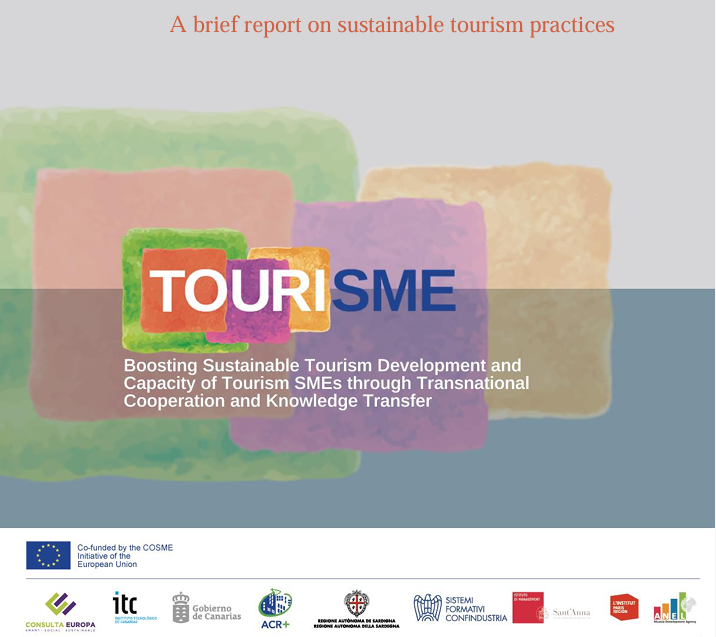The TOURiSME project, co-funded by the EU’s COSME program, compiled a comprehensive “Compendium of Best Practices” (Deliverable D2.3) to help small and medium-sized tourism businesses adopt sustainable strategies. The initiative, running from September 2020 for 30 months, brought together partners across Spain, Italy, France, Cyprus, and Belgium to promote knowledge transfer and multi-stakeholder collaboration.
What’s Inside the Compendium
- 106 real-world practices, categorized by theme:
- Energy Conservation (38)
- Water Conservation (27)
- Waste Management (22)
- Green Procurement (19)
- Green Building (5)
- Awareness & Behavioural Change (14)
- Sustainable Mobility (6)
- Corporate Social Responsibility (9)
- Other Collaborative & Policy Measures (22).
- Expert scoring: Practices were rated by an expert panel on environmental, economic, social benefits, and feasibility. Results helped identify top practices for replication.
Energy & Water Conservation Highlights
- Energy-saving technologies: Installing solar panels, LED/CFL lighting, daylight-harvesting systems, secondary glazing, and key-card room power control systems—all proven to reduce energy use and costs.
- Water-saving solutions: Dual-flush toilets, low-flow showerheads, and rainwater harvesting systems—especially effective in water-stressed regions like the Mediterranean .
Waste, Procurement & Behavioural Change
- Advanced waste management: Organic waste tracking and food-waste reduction solutions, such as AI-enabled systems that cut kitchen waste by up to 50% .
- Green procurement policies: Prioritizing local, durable, and low-impact products—e.g. calculating precise food needs and replacing single-use items .
- Promoting pro-environmental behavior: Encouraging towel reuse, educating guests about public transport, and fostering staff sustainability awareness to solidify technical improvements.
Mobility, Building & CSR
- Sustainable mobility: Incentivizing employee use of public transit, walking, cycling, and low-carbon travel options.
- Green building efforts: Retrofitting structures and eco-renovation using sustainable materials to improve energy and resource efficiency.
- CSR initiatives: Programs like food donation, carbon-offset travel deals, and socially responsible tourism pledges enhance community engagement.
Why It Matters
This Compendium serves as a practical guidebook for tourism SMEs aiming to sustainable tourism trough:
- Reduce energy, water, and waste footprints
- Engage stakeholders and shape sustainable behaviors
- Enhance resilience and competitiveness by learning from proven solutions
By prioritizing feasible and impactful practices, TOURiSME offers a replicable model for sustainable tourism—especially valuable for destinations seeking both environmental and economic success.

